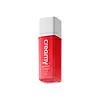What's inside
What's inside
 Key Ingredients
Key Ingredients

 Benefits
Benefits

 Concerns
Concerns

No concerns
 Ingredients Side-by-side
Ingredients Side-by-side

Water
Skin ConditioningDisodium EDTA
Hydroxyethyl Ethylcellulose
EmulsifyingSodium Acrylates Copolymer
Lecithin
EmollientGlycerin
HumectantXanthan Gum
EmulsifyingTocopherol
AntioxidantBHT
AntioxidantCaprylic/Capric Triglyceride
MaskingPhenoxyethanol
PreservativeEthylhexylglycerin
Skin ConditioningPropanediol
SolventCamellia Sinensis Leaf Extract
AntimicrobialAlthaea Rosea Flower Extract
Skin ConditioningPentylene Glycol
Skin ConditioningLevulinic Acid
PerfumingGlyceryl Caprylate
EmollientGluconolactone
Skin ConditioningCellulose
AbsorbentRetinal
Skin ConditioningTriethanolamine
BufferingWater, Disodium EDTA, Hydroxyethyl Ethylcellulose, Sodium Acrylates Copolymer, Lecithin, Glycerin, Xanthan Gum, Tocopherol, BHT, Caprylic/Capric Triglyceride, Phenoxyethanol, Ethylhexylglycerin, Propanediol, Camellia Sinensis Leaf Extract, Althaea Rosea Flower Extract, Pentylene Glycol, Levulinic Acid, Glyceryl Caprylate, Gluconolactone, Cellulose, Retinal, Triethanolamine
Bifida Ferment Lysate
Skin ConditioningButylene Glycol
HumectantBifida Ferment Filtrate
Skin ConditioningLactobacillus Ferment Lysate
Skin ConditioningLactococcus Ferment Lysate
Skin ConditioningSaccharomyces Ferment Filtrate
HumectantGlycerin
HumectantNiacinamide
Smoothing1,2-Hexanediol
Skin ConditioningLactobacillus/Pumpkin Fruit Ferment Filtrate
Skin ConditioningAureobasidium Pullulans Ferment
Skin ConditioningHyaluronic Acid
HumectantSodium Hyaluronate
HumectantSodium Hyaluronate Crosspolymer
HumectantSodium Acetylated Hyaluronate
HumectantHydrolyzed Sodium Hyaluronate
Skin ConditioningPotassium Hyaluronate
Skin ConditioningHydrolyzed Hyaluronic Acid
HumectantHydroxypropyltrimonium Hyaluronate
Leontopodium Alpinum Callus Culture Extract
AntioxidantCutibacterium Granulosum Ferment Extract Filtrate
EmollientAsiaticoside
AntioxidantAsiatic Acid
Skin ConditioningMadecassic Acid
Skin ConditioningPentylene Glycol
Skin ConditioningSqualane
EmollientHydrogenated Lecithin
EmulsifyingCopper Tripeptide-1
Skin ConditioningTromethamine
BufferingAcetyl Hexapeptide-8
HumectantPropanediol
SolventEthylhexylglycerin
Skin ConditioningDextrin
AbsorbentWater
Skin ConditioningCaffeine
Skin ConditioningBenzyl Glycol
SolventSodium Phytate
Hydrolyzed Algin
Xanthan Gum
EmulsifyingEpigallocatechin Gallate
AntioxidantCarbomer
Emulsion StabilisingPhysalis Alkekengi Calyx Extract
Skin ConditioningHydrolyzed Glycosaminoglycans
HumectantPolyglyceryl-10 Laurate
Skin ConditioningTheobroma Cacao Seed Extract
AntioxidantAdenosine
Skin ConditioningBifida Ferment Lysate, Butylene Glycol, Bifida Ferment Filtrate, Lactobacillus Ferment Lysate, Lactococcus Ferment Lysate, Saccharomyces Ferment Filtrate, Glycerin, Niacinamide, 1,2-Hexanediol, Lactobacillus/Pumpkin Fruit Ferment Filtrate, Aureobasidium Pullulans Ferment, Hyaluronic Acid, Sodium Hyaluronate, Sodium Hyaluronate Crosspolymer, Sodium Acetylated Hyaluronate, Hydrolyzed Sodium Hyaluronate, Potassium Hyaluronate, Hydrolyzed Hyaluronic Acid, Hydroxypropyltrimonium Hyaluronate, Leontopodium Alpinum Callus Culture Extract, Cutibacterium Granulosum Ferment Extract Filtrate, Asiaticoside, Asiatic Acid, Madecassic Acid, Pentylene Glycol, Squalane, Hydrogenated Lecithin, Copper Tripeptide-1, Tromethamine, Acetyl Hexapeptide-8, Propanediol, Ethylhexylglycerin, Dextrin, Water, Caffeine, Benzyl Glycol, Sodium Phytate, Hydrolyzed Algin, Xanthan Gum, Epigallocatechin Gallate, Carbomer, Physalis Alkekengi Calyx Extract, Hydrolyzed Glycosaminoglycans, Polyglyceryl-10 Laurate, Theobroma Cacao Seed Extract, Adenosine
 Reviews
Reviews

Ingredients Explained
These ingredients are found in both products.
Ingredients higher up in an ingredient list are typically present in a larger amount.
Ethylhexylglycerin (we can't pronounce this either) is commonly used as a preservative and skin softener. It is derived from glyceryl.
You might see Ethylhexylglycerin often paired with other preservatives such as phenoxyethanol. Ethylhexylglycerin has been found to increase the effectiveness of these other preservatives.
Glycerin is already naturally found in your skin. It helps moisturize and protect your skin.
A study from 2016 found glycerin to be more effective as a humectant than AHAs and hyaluronic acid.
As a humectant, it helps the skin stay hydrated by pulling moisture to your skin. The low molecular weight of glycerin allows it to pull moisture into the deeper layers of your skin.
Hydrated skin improves your skin barrier; Your skin barrier helps protect against irritants and bacteria.
Glycerin has also been found to have antimicrobial and antiviral properties. Due to these properties, glycerin is often used in wound and burn treatments.
In cosmetics, glycerin is usually derived from plants such as soybean or palm. However, it can also be sourced from animals, such as tallow or animal fat.
This ingredient is organic, colorless, odorless, and non-toxic.
Glycerin is the name for this ingredient in American English. British English uses Glycerol/Glycerine.
Learn more about GlycerinPentylene glycol is typically used within a product to thicken it. It also adds a smooth, soft, and moisturizing feel to the product. It is naturally found in plants such as sugar beets.
The hydrophilic trait of Pentylene Glycol makes it a humectant. As a humectant, Pentylene Glycol helps draw moisture from the air to your skin. This can help keep your skin hydrated.
This property also makes Pentylene Glycol a great texture enhancer. It can also help thicken or stabilize a product.
Pentylene Glycol also acts as a mild preservative and helps to keep a product microbe-free.
Some people may experience mild eye and skin irritation from Pentylene Glycol. We always recommend speaking with a professional about using this ingredient in your routine.
Pentylene Glycol has a low molecular weight and is part of the 1,2-glycol family.
Learn more about Pentylene GlycolPropanediol is an all-star ingredient. It softens, hydrates, and smooths the skin.
It’s often used to:
Propanediol is not likely to cause sensitivity and considered safe to use. It is derived from corn or petroleum with a clear color and no scent.
Learn more about PropanediolWater. It's the most common cosmetic ingredient of all. You'll usually see it at the top of ingredient lists, meaning that it makes up the largest part of the product.
So why is it so popular? Water most often acts as a solvent - this means that it helps dissolve other ingredients into the formulation.
You'll also recognize water as that liquid we all need to stay alive. If you see this, drink a glass of water. Stay hydrated!
Learn more about WaterXanthan gum is used as a stabilizer and thickener within cosmetic products. It helps give products a sticky, thick feeling - preventing them from being too runny.
On the technical side of things, xanthan gum is a polysaccharide - a combination consisting of multiple sugar molecules bonded together.
Xanthan gum is a pretty common and great ingredient. It is a natural, non-toxic, non-irritating ingredient that is also commonly used in food products.
Learn more about Xanthan Gum